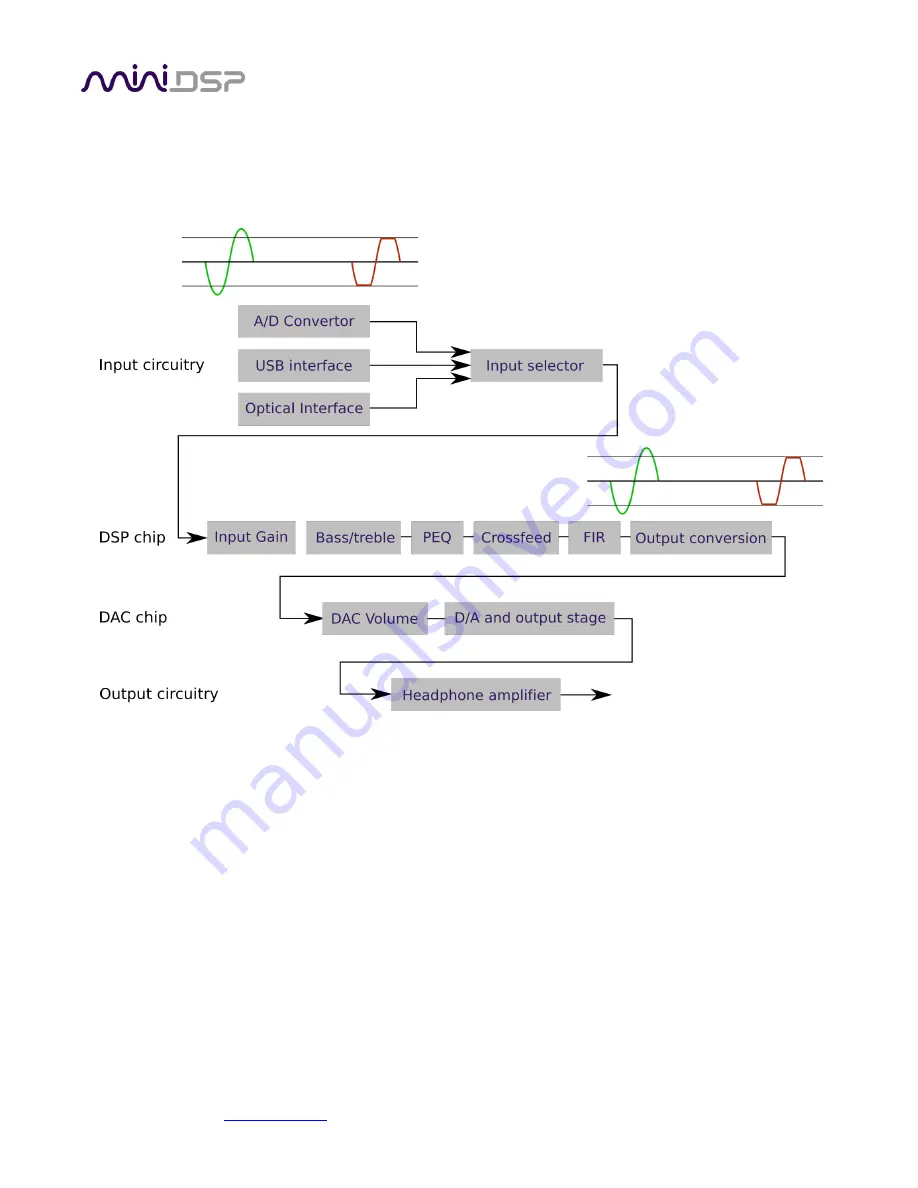
miniDSP Ltd, Hong Kong /
/ Features and specifications subject to change without prior notice
40
8.11
A
VOIDING CLIPPING
When using digital EQ and DSP in general, it’s important to understand the various factors that affect signal level
through the processing chain, to avoid clipping (severe distortion) and maintain resolution. Here is the signal
processing chain of the HA-DSP:
(Note: this applies for normal PCM playback mode. All processing on the line labeled “DSP Chip” is disabled
when in DSD playback mode.)
There are two places where clipping can occur:
1.
In the A/D convertor. The HA-DSP has a maximum input signal level of 1.0 V RMS. If this level is exceeded,
clipping of the A/D convertor will result. This can be avoided by reducing the signal level at the analog
source.
2.
In the Output Conversion stage of the DSP chip. Internally, the DSP uses floating-point numbers, which can
be used to represent an arbitrary range of numbers. To send data to the DAC chip, however, the data must
be converted to an integer format. If there is internal gain in the DSP processing (because of EQ, for
example), then the signal that is sent to the DAC chip may be clipped.










































